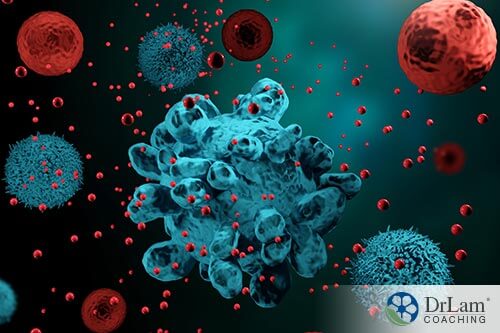 Stem cell therapy has come a long way since its inception. It’s no longer a controversial topic revolving around the ethics of extracting stem cells from embryos. Nowadays, you can derive bioengineered exosomes and bioengineered stem cells from a variety of sources and then manipulate them to become even more effective.
Stem cell therapy has come a long way since its inception. It’s no longer a controversial topic revolving around the ethics of extracting stem cells from embryos. Nowadays, you can derive bioengineered exosomes and bioengineered stem cells from a variety of sources and then manipulate them to become even more effective.
And though modern medicine is excellent at dealing with injuries and acute illnesses, it is severely limited when it comes to chronic diseases and the aging process. So far, it mostly focused on symptom relief. Which is important and should be looked at. But it does little to address the root problems. Stem cell therapy, especially the new advances in bioengineered exosomes, may help fill that gap.
Although we are always on the lookout for new types of therapies for adrenal fatigue, there are a few concerns we have about this therapy that we’ll outline in this article. We do believe that bioengineered exosomes may be of interest to adrenal fatigue sufferers, especially those with certain comorbidities. But we advise a lot of caution if you’re thinking of exploring it as an option.
But before we cover these issues, let’s take a quick look at what stem cells are and how they work.
A stem cell is a cell that has the ability to differentiate. This means it can turn into another cell type. Embryonic stem cells are what help the embryo grow tissues, organs, and bones. A stem cell also has the ability to self-renew. Embryonic stem cells are totipotent, because they can become any type of cell.
Pluripotent cells are stem cells that can turn into many different types of cells, but not all types. They are extracted from the umbilical cord. Adult mesenchymal stromal cells (MSCs) are mainly derived from three sources: bone marrow, peripheral blood, and adipose tissue. Neonatal birth-associated MSCs are usually derived from the placenta, amniotic fluid, Wharton’s jelly, umbilical cord, umbilical blood, and chorionic villi.
Exosomes are membrane-bound vesicles produced within the cells that the cells then excrete to send out into the extracellular space. They carry genetic information and signaling proteins to other cells, giving them instructions. For example, breastmilk is one of the richest sources of exosomes, and its exosomes help pass immune instructions from mother to baby.
Stem cells are a kind of exosome factory. Especially MSCs. You can even induce them to make a lot more exosomes, and very quickly.
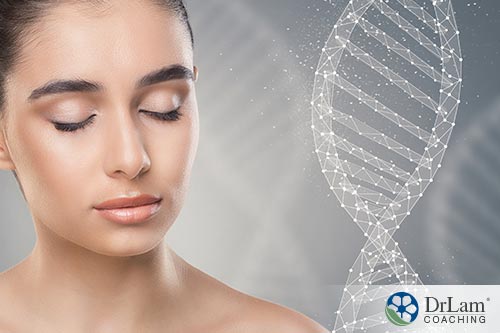 Most people think of growing an organ when talking about stem cells. This is a kind of engraftment. But actually, stem cells are much more than that. They are a kind of medicinal cell that senses its environment and then responds with instructions for healing and regeneration. These messages are biosignals.
Most people think of growing an organ when talking about stem cells. This is a kind of engraftment. But actually, stem cells are much more than that. They are a kind of medicinal cell that senses its environment and then responds with instructions for healing and regeneration. These messages are biosignals.
More specifically, when you implant stem cells into your body, they release exosomes into the extracellular space. The exosomes induce a response from the recipient cells. These responses result in sustained regeneration, even after the original stem cell is no longer there.
It’s interesting to note here that your adrenal glands can also reprogram their cells to regenerate. This is lineage conversion, and it helps the adrenals’ daily maintenance and recovery after injury. But, as we’ll cover in more detail, there is a limit to how much stress the adrenals can handle. Once past a certain limit, they dysregulate and can’t keep up.
A biosignal is a type of cell-to-cell communication that induces a change in the receiving cells’ behavior. In a way, you can think of stem cells as packages of signaling proteins.
That signaling can be done over short or long distances through paracrine molecular instructions or through endocrine biosignaling respectively. Autocrine biosignaling involves the cell releasing its signaling proteins for its own receptors to take up. Contact-dependent biosignaling involves two cells in direct contact with each other.
Bioengineered exosomes attempt to leverage that biosignaling without the entire stem cell being transplanted into your body. This can help remove some of the risks that stem cells pose.
The process of preparing bioengineered exosomes involves carefully sorting the exosomes responsible for signaling from the stem cell. Then, these exosomes are packaged in a way that allows for proper transport and delivery to the receiving cells. This also helps protect them from damage when they’re implanted in the body.
The way that stem cells respond to their environment and how they communicate with each other is what bioengineering aims to control. Bioengineered stem cells then become the appropriate type of regenerative molecules for the condition that they are addressing. Stem cells can also be engineered to create entire organs.
Depending on the need, a stem cell can be programmed to send biosignals to induce the following:
These biosignals may become useful in adrenal fatigue recovery. For example, because adrenal fatigue can weaken your immune system and create chronic inflammation, the immunomodulating action of stem cells can help with that. The anti-bacterial effects can also help your immune system fight off infections.
The potentials of bioengineering are endless; they are only limited to how fast technology can advance. But, so far, the following are some of the conditions they are being looked at for:
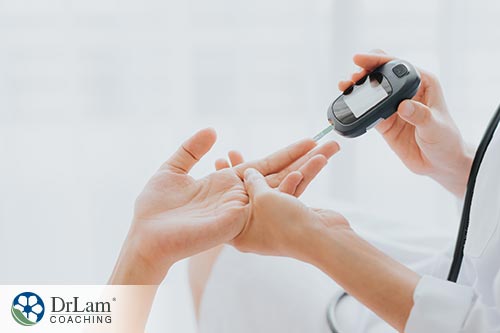 Diabetes
DiabetesMany adrenal fatigue sufferers have comorbid chronic conditions. Sometimes it’s the chronic condition that stresses your body to the point of adrenal fatigue. And sometimes the adrenal fatigue makes your body more vulnerable to developing another chronic condition. A little later in the article, we’ll take a look at some of these conditions and how bioengineered exosomes can help with those.
The power of stem cells lies in their ability to renew and differentiate. This is what can help repair damaged cells and replace dead and aging cells. But this same power can also become a risk. If stem cells divide and renew perpetually, this means they are behaving like cancer cells.
This is one reason we highly advise a lot of caution when exploring the option of using stem cell therapy. Thankfully, researchers are testing different technologies that can help prevent implanted stem cells from behaving like cancer cells. But even then, we still advise caution for those with Adrenal Fatigue Syndrome (AFS) and NeuroEndoMetabolic (NEM) Stress Response dysregulation.
AFS is a condition that results from chronic stress, whether physical or psychological. It’s characterized by abnormal levels of cortisol, which is your body’s main anti-stress hormone secreted by the adrenal glands. In the beginning stages of AFS, cortisol levels rise, but when your adrenals are too exhausted, their cortisol output drops.
Depending on which stage of adrenal fatigue you’re in, your body will react to stem cell therapy differently. If you’re in the beginning stages, your body may respond well to it. That’s because your adrenals are not yet too weak and could handle the stimulation that bioengineered exosomes could create. But if you’re in the more advanced stages, your adrenals can’t take any extra stimulation.
The other issue with stem cells is that, depending on the type and preparation, they contain different types of minerals. And depending on these different types of minerals, they can cause a disturbance in the already fragile mineral balances in the body.
Your NEM responds to stress through changes in the network of organs and systems that work together to fight that stress. These organs and systems are divided into six NEM circuits: The Hormone, the Bioenergetics, the Cardionomic, the Neuroaffect, the Inflammation, and the Detoxification circuits.
Bioengineered exosomes affect these six circuits differently. Whether these effects are beneficial or detrimental depends partly on which circuits are affected. The following are some of the ways that this could play out.
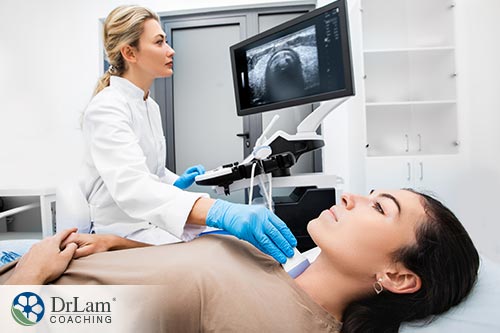 Your Hormone circuit is composed of your adrenal, thyroid, and reproductive glands. These glands and the hormones they secrete are modulated by the control center in the brain: the hypothalamus and pituitary gland. Together, they form hormone cascades, such as the hypothalamic-pituitary-adrenal (HPA) axis, the hypothalamic-pituitary-thyroid (HPT) axis, and the hypothalamic-pituitary-gonadal (HPG) axis.
Your Hormone circuit is composed of your adrenal, thyroid, and reproductive glands. These glands and the hormones they secrete are modulated by the control center in the brain: the hypothalamus and pituitary gland. Together, they form hormone cascades, such as the hypothalamic-pituitary-adrenal (HPA) axis, the hypothalamic-pituitary-thyroid (HPT) axis, and the hypothalamic-pituitary-gonadal (HPG) axis.
All of these axes can dysregulate, causing a disruption in their very important hormone functions. If your HPA goes out of whack, you can suffer from irritability, fatigue, and anxiety. When your HPT is imbalanced, you get symptoms like fatigue, decreased energy, weight gain, PMS, and mild depression. And if it’s your HPG that’s not working properly, issues such as brain fog, memory loss, and estrogen dominance can arise.
Bioengineered stem cells may transmit endocrine biosignals that can help regulate these axes when they’ve dysregulated. Other endocrine glands and biosignals they can support include the pineal gland, responsible for regulating sleep, and the pancreas, which is part of the Bioenergetics circuit.
Your Inflammation circuit is composed of your immune system, gut, and microbiome. It’s responsible for attacking any harmful stimuli and then getting rid of it through your Detoxification circuit. It’s also responsible for triggering the repair of damaged tissues.
In that sense, inflammation in and of itself is a healthy and necessary process. It’s only when it becomes chronic that it then can create a lot of health problems. In fact, chronic inflammation is an underlying cause of many chronic diseases, including depression.
For your Inflammation circuit to work properly, it needs your Detoxification circuit to be fast and effective. Your Detoxification circuit is composed of your liver, extracellular matrix (or interstitium), and your immune system. But, if you have adrenal fatigue, your Detoxification circuit is most likely congested. That means that the toxic load in your body can easily build-up, along with worsening inflammation in your body.
Inflammation and toxicity are two of the biggest stressors on the body. If not addressed, they lead to an aggravation of AFS. And because cortisol helps neutralize inflammation, if your AFS is advanced and your cortisol output is very low, inflammation can then run rampant in your body.
Stem cell therapy has anti-inflammatory effects. That’s why it can help conditions such as rheumatoid arthritis and wound healing. That may also be why it’s neuroprotective.
One theory as to why stem cells can have an anti-inflammatory effect says it’s because of the way they use energy. Most cells use oxygen to convert glucose to ATP, the energy currency of life. Stem cells can actually adapt and use only glucose to make ATP. As they do this, they become more capable of responding to inflammation. They become more anti-inflammatory.
And that’s one benefit some technicians are looking at when creating bioengineered stem cells.
Your Neuroaffect circuit is composed of your autonomic nervous system (ANS), brain, and microbiome. This circuit helps your body deal with stress by activating the release of different neurotransmitters. These neurotransmitters put your body on alert for the “fight or flight” response, and then calm it down when the threat is over. Your gut makes many of these neurotransmitters. That’s why the microbiome is part of your Neuroaffect circuit.
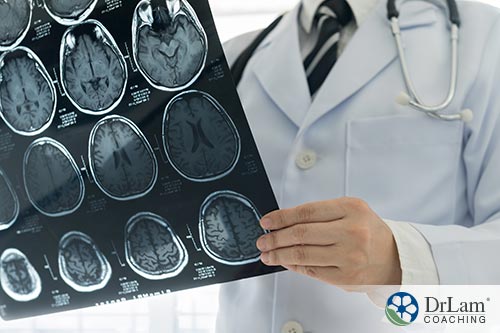 One reason bioengineered stem cells can have a neuroprotective effect is because of their anti-inflammatory properties. Inflammation, which usually begins in the gut, can affect the production and regulation of neurotransmitters. It can also travel to the brain and nervous system, causing psychiatric and neurological symptoms.
One reason bioengineered stem cells can have a neuroprotective effect is because of their anti-inflammatory properties. Inflammation, which usually begins in the gut, can affect the production and regulation of neurotransmitters. It can also travel to the brain and nervous system, causing psychiatric and neurological symptoms.
That’s why you get symptoms like brain fog, anxiety, and mild depression when you have AFS. And that may be why SSRIs work, because they have strong anti-inflammatory properties.
But unlike SSRIs, bioengineered stem cells don’t have all the contraindications and side-effects that can be a hassle for many. Depression is a very complicated condition with many factors. But for the cases where the main culprit is neuroinflammation, stem cell therapy may be an exciting new development. It’s also exciting for researchers in the field of neurodegenerative diseases, especially for the age-related types, like Alzheimer’s disease and Parkinson’s disease.
And, finally, stem cell therapy can even be useful for your Cardionomic circuit. Your Cardionomic circuit is composed of your cardiovascular system, your ANS, and your adrenal glands. Your adrenals, though part of your Hormone circuit, are also what help get your heart pumping more oxygenated blood during the “fight or flight” response. This helps your body have the energy it needs to respond to the stressor.
But, if you're facing chronic stress, your Cardionomic circuit will eventually dysregulate. This is why you can get high blood pressure, heart palpitations, a pounding heart, atrial fibrillation, shortness of breath, cardiac arrhythmia, and even POTS-like symptoms. If this continues, your heart can actually sustain a lot of damage.
Cardiovascular disease is America’s number one killer. So, although mainstream medicine is excellent at addressing an acute problem, like a heart attack, it is chronic cardiovascular disease that is the challenge. And it is also what can be most helped by stem cells.
Stem cell therapy is a potential therapy for chronic cardiovascular disease. One of the ways it can help is by sending a biosignal for angiogenesis. Angiogenesis is the process of forming new blood vessels. It happens when endothelial cells, which are the cells that line the inner walls of blood vessels, migrate, grow, and differentiate.
Cardiovascular disease is an umbrella term for different types of diseases of the cardiovascular system. Some of these result from the damage, clogging, and rupture of blood vessels. That’s why stem cell-induced angiogenesis can help with this.
Another way stem cells can help is, once again, due to their anti-inflammatory action. Like other chronic conditions, heart disease has inflammation as one of its underlying factors. So reducing inflammation reduces the disease risk.
 Aging is one of the biggest risk factors in developing chronic conditions, including cancer. And one of the main reasons for that is because your immune system ages as you grow older. And although we are living longer than our ancestors, living longer should not be the only goal. The goal should be living longer and maintaining or even improving, our quality of life.
Aging is one of the biggest risk factors in developing chronic conditions, including cancer. And one of the main reasons for that is because your immune system ages as you grow older. And although we are living longer than our ancestors, living longer should not be the only goal. The goal should be living longer and maintaining or even improving, our quality of life.
To do that, we need to understand how aging happens, including how immune system aging happens. That way we can look at what we can do to stop or reverse the process.
There are several theories of aging, including:
Stem cell therapy can help with all of the above. That's because you can program bioengineered exosomes to target each of these systems in a unique way. We’ve already looked at how it can help with stress and inflammation, which would address the Stress Theory, Cytokine Theory, and Oxidation-Inflammation Theory.
But bioengineered stem cells can also trigger epigenetic changes that can then stop or reverse DNA damage and telomeric shortening. They can also help with cell renewal, which is part of the Autophagy Theory. And, of course, the Stem Cell Theory of aging can be the one most impacted by bioengineered stem cells.
And, last but not least, because they can have an immunomodulating effect, they can help your immune system regain or maintain its strength as you age.
It can seem like bioengineered stem cells are a miracle cure. You can program them to target almost anything. But this technology is still in its infancy. The cells do multiply like cancer cells unless they are stopped. And although there are many interesting developments, we don’t advise anyone with AFS, especially in the more advanced stages, to try therapies that can add any pressure to the adrenals.
As mentioned, even the packaging that the bioengineered exosomes are put in can have minerals and substances that can disrupt the very fragile chemical balances in your body when you have AFS.
Another reason to take care is that stem cell therapy is not yet well-regulated. There are clinics and practitioners out there that have exploited this and offer therapies that haven’t been rigorously tested.
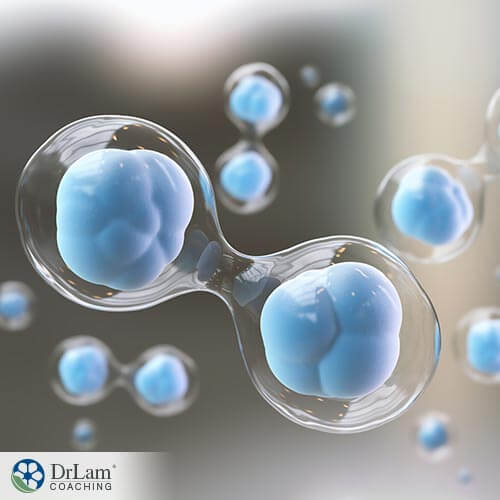 Bioengineered stem cells are a possible alternative to many of the more invasive and less effective chronic disease therapies out there. You can engineer them to target specific issues and to last inside the body for much longer than before. Many researchers are looking into using them for some of the world’s most debilitating health problems, from diabetes, to cardiovascular disease, to neurodegenerative diseases.
Bioengineered stem cells are a possible alternative to many of the more invasive and less effective chronic disease therapies out there. You can engineer them to target specific issues and to last inside the body for much longer than before. Many researchers are looking into using them for some of the world’s most debilitating health problems, from diabetes, to cardiovascular disease, to neurodegenerative diseases.
They seem to work on many levels. They have anti-inflammatory and regenerative properties, for example. And the way they work is by sensing their environment and then sending healing signals to the receiving cells.
This is especially interesting for the field of anti-aging and regenerative medicine. Most chronic diseases have age as an underlying risk factor and inflammation as an underlying cause. Aging and chronic disease are two issues that mainstream medicine is not capable of handling well. That’s why any new developments are worth researching.
But, because we don’t really know how bioengineered stem cells and exosomes affect the adrenal glands or the NEM, we are not sure what the cost-benefit ratio would be for AFS sufferers. We can guess how stem cells can benefit the NEM, but we have not found any studies or tests done on the possible risks.
If you have AFS, we advise you to stick with the tried-and-true adrenal fatigue recovery process instead. That includes eating an adrenal fatigue diet, taking an individualized regimen of gentle nutrients, doing adrenal breathing or adrenal yoga exercises, getting enough rest and sleep, drinking enough water, and managing your stress.
And, because adrenal fatigue recovery requires an individualized approach, the best way to do that is through supervision with an experienced professional.
If you’d like to find out more about adrenal fatigue recovery, you can contact the Dr. Lam Coaching team. We offer a free** no-obligation phone consultation at +1-626-571-1234 where we will privately discuss your symptoms and what your options are. You can also send us a question through our Ask The Doctor system by clicking here.
Bioengineered exosomes and bioengineered stem cells are a new medical technology that harnesses the power of stem cells. It helps make these stem cells more targeted and longer-lasting when transplanted in the body. In this article, we outline some of its most exciting potential uses.
